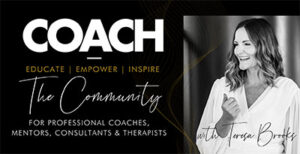Somatic Coaching for Leadership – Jo Manton

Bring your attention to the body and perform with mastery
Somatic coaching considers that leadership skills and principles can be taught and embodied through the physical state.
Derived from the Greek word “somatikos”, which signifies the living, pertaining to the body, it’s about how leadership is physically embodied by a person in how they use their presence to lead others in a direction towards a shared future.
Simon, a senior leader in a global organisation, came to coaching as he was having challenges working with his team and others he needed to influence and was finding his inability to build relationships prevented him from progressing his career. He had received feedback from others about how he was perceived yet was still unable to build trust with the people he worked with – or listen to them. He was unaware of his mood and how it impacted those around him and struggled to deal with his emotions when he got frustrated when things didn’t go to plan.
As his coach, I observed initially that his breath was shallow, high in his chest and in certain conversations he would hold his breath. His shoulders, neck, and upper back were very tensed too. In addition, he rarely made eye contact when he spoke to his team.
I pointed this out and he was surprised – unaware he was doing these things or that they were noticeable to others and getting in the way of him being an effective leader. “How does my breath pattern have anything to do with my leadership skills?” he asked.
The Somatic process
By working through the body, people learn how to engage with their personal energy and allow it to inform their actions, relationships, moods, and way of being in the world.
Simon came to understand that the way he held himself physically produced assessments that he was anxious and that he did not care about his team members. As anxiety is one of the most infectious moods, Simon’s team members became anxious and this affected their performance.
He learned to centre on a deep and rhythmic breath and release the tension in his shoulders, neck and back. Although he felt vulnerable to be this relaxed, he realised that he could think clearer and was less fatigued when he was centred. The chronic back pain he had also disappeared.
“Knowledge is only rumour until it lives in the body” ― Papua New Guinea Proverb
He learned to align his head, shoulders, hips, knees, and ankles so he was standing straight and in a relaxed manner when he was sitting at his desk or in a team meeting. Since he was usually tilted forward, this new stance took the strain off his upper back and also mitigated his team’s feeling that he was always leaning into them in an aggressive manner, making him appear more inclusive to his colleagues.
Somatic Coaching showed Simon how he could face those he was talking to which built a deeper layer of contact and trust and he learned to build a more reflective composure that was more conducive to leadership.
Having somatic awareness helps leaders to build an embodied competence in how they speak and listen, increasing their ability to build rapport, explore possibilities and co-ordinate action with others.
People who have experienced somatic coaching are more resilient, able to take more effective action in challenging situations (such as a corporate restructure), deliver results in less time, and increase engagement and motivation within their organisations.
Being able to bring your attention to your body enables leaders to take effective action in the world; to develop the capacity to “perform with mastery” – otherwise known as taking the appropriate action at the appropriate time.






